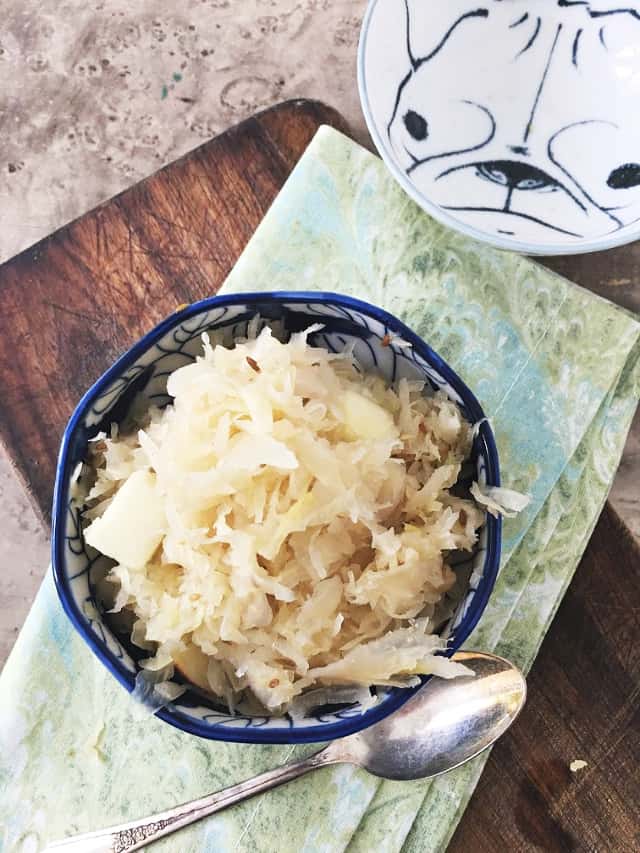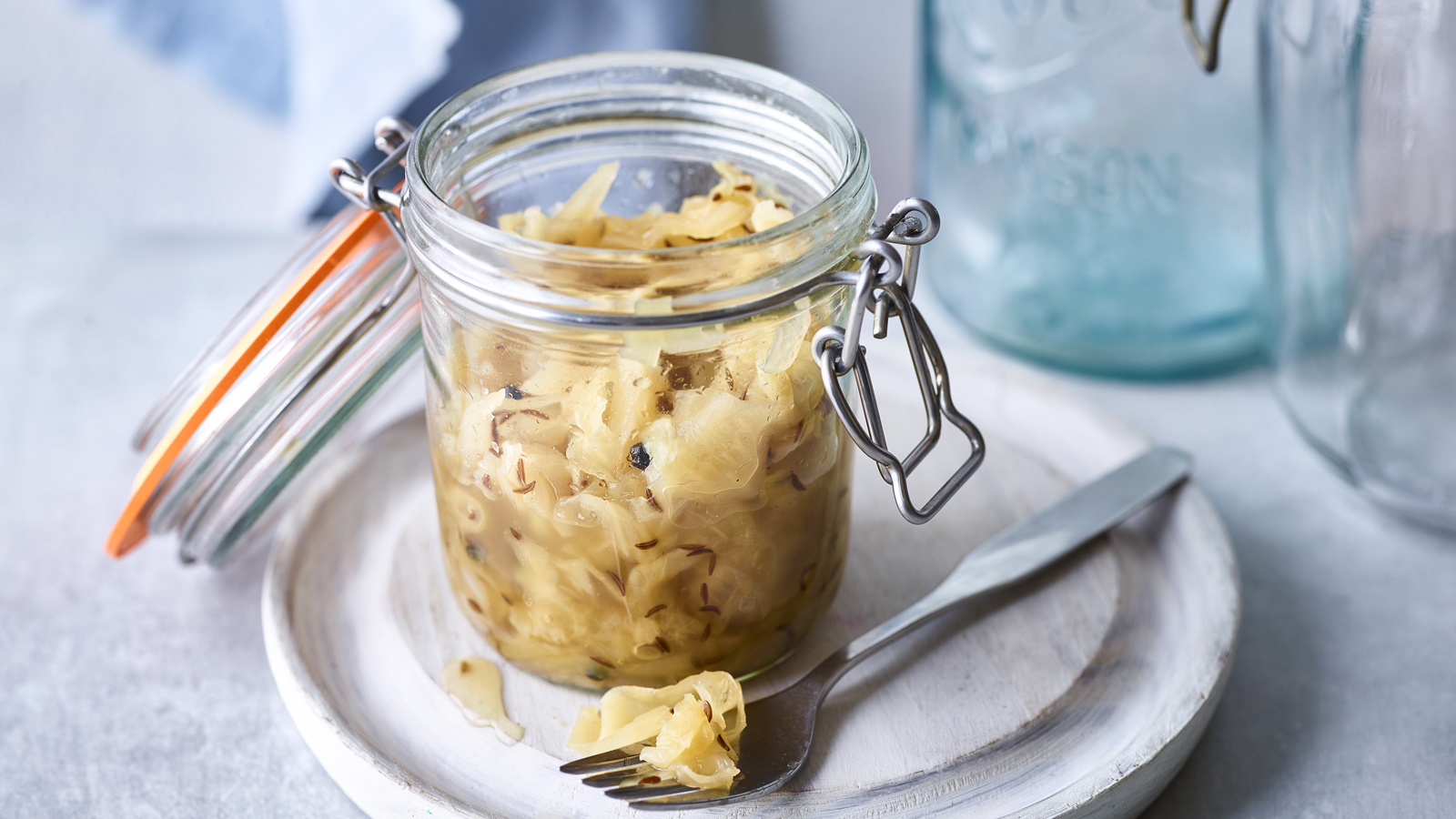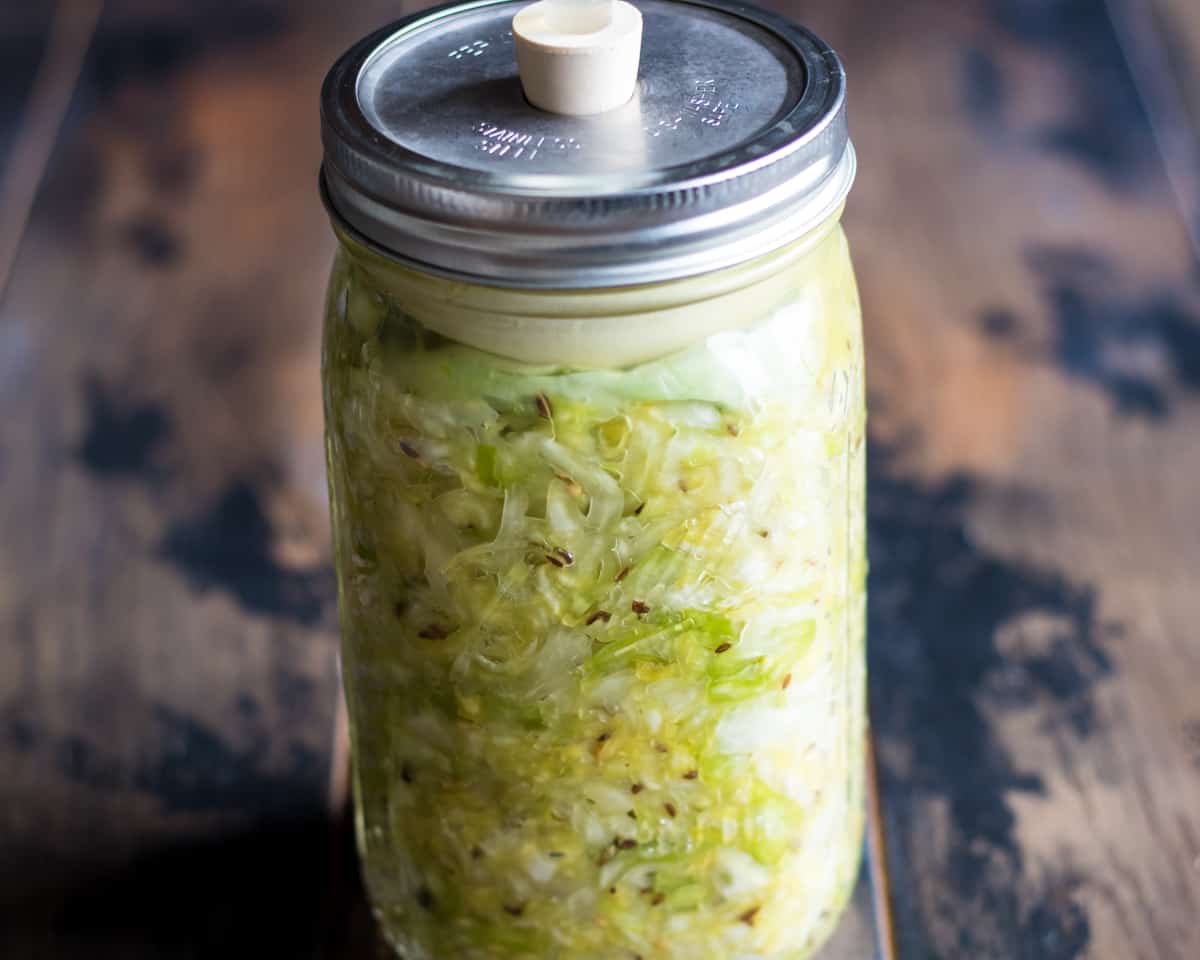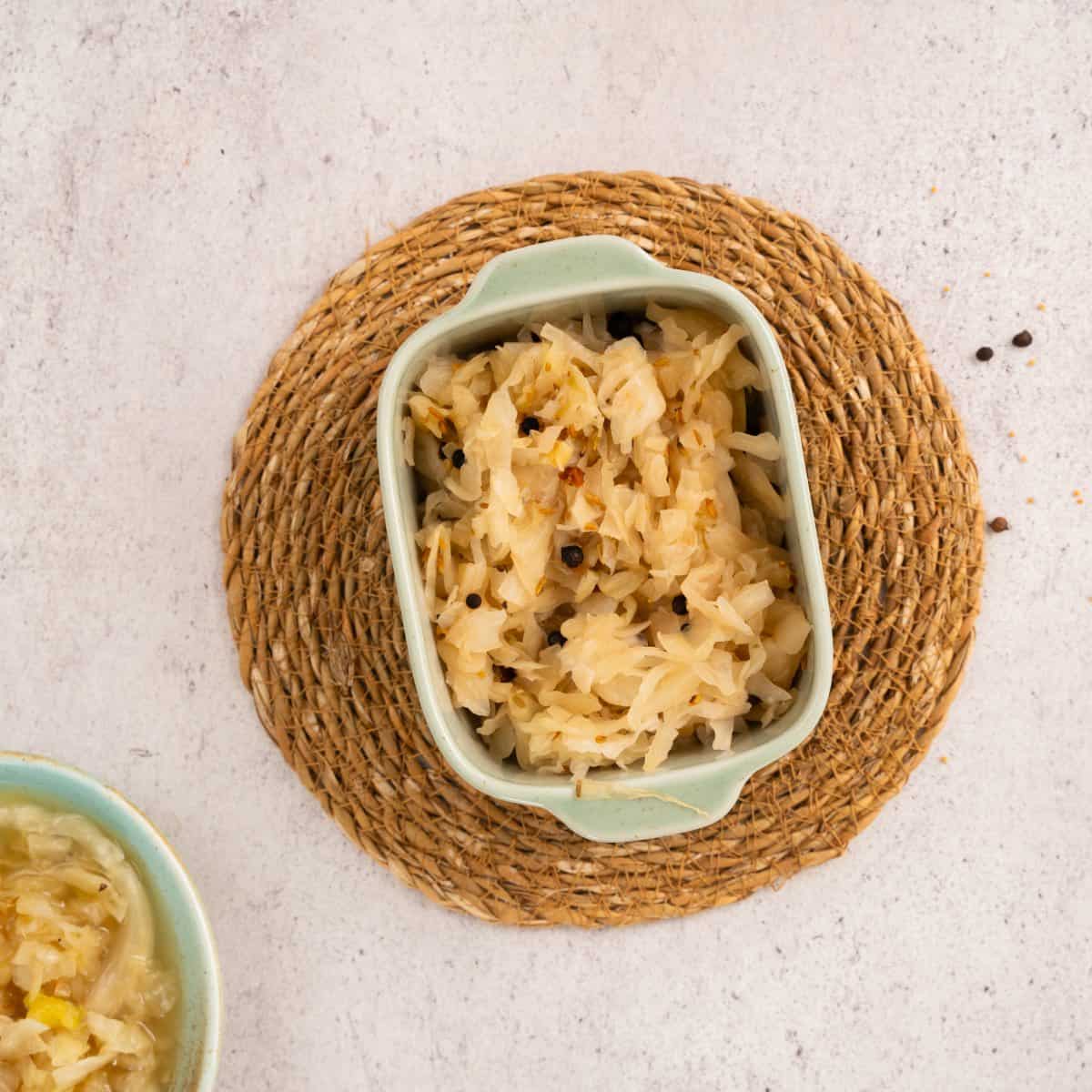Home canned sauerkraut
3.6
(36)
Your folders
Your folders
Prep Time: 45 minutes
Cook Time: 45 minutes
Total: 45 minutes
Servings: 2
Author : Healthy Canning

Ingredients
Export 1 ingredients for grocery delivery
Instructions
Step 1
Take cabbage, discard outer leaves.
Step 2
Wash heads under running water, shake excess water off.
Step 3
With a large knife such as a French knife, quarter the cabbage heads.
Step 4
Cut out and discard the cores.
Step 5
Slice the quartered cabbage into slices about 2 mm (.07 inches) thick (the thickness of a US / Cdn quarter or a 10 p piece.)
Step 6
Put cabbage either into a very large bowl or directly into the container you are going to use to ferment it in - whatever you prefer to be working in.
Step 7
Sprinkle the salt over and mix in.
Step 8
Some sources say to let it stand a bit so the salt will start drawing at least a bit of liquid out. Some suggest 10 minutes; the All New Ball says cover it and let stand for an hour.
Step 9
Begin pounding / crushing the cabbage, and keep on crushing it until a good amount of liquid has been released from the leaves.
Step 10
Ideally, you are going to be aiming for enough released liquid to cover the cabbage once in the fermenting container, but you may rarely get it at this point -- don't worry.
Step 11
Add to fermenting container, if it's not already.
Step 12
If you are doubling, tripling or quadrupling the recipe, start the next batch of cabbage now, then add to container.
Step 13
Repeat until you have prepped all the cabbage you planned to.
Step 14
When you are finished crushing, if the cabbage is not already in the fermentation container, move it all there.
Step 15
Be sure to leave a gap of 10 to 12 cm (4 to 5 inches) between the cabbage in the container, and the top rim of the container as headspace.
Step 16
If you have more cabbage than that, you'll need another container.
Step 17
If the juice you were able to produce was not sufficient to cover the cabbage, then make a brine (see directions below) and use that to top up with. (To be clear: you are not aiming to fill the container to the top rim with liquid; you are after enough liquid to completely submerge all the cabbage by 2 to 5 cm / 1 to 2 inches.) FIRST, though, see Linda Ziedrich suggestion in Brine section: she suggests waiting 24 hours to see if it will produce enough juice on its own before adding the extra brine.
Step 18
Cover cabbage with some sort of weight (see Weights Options below) to keep it safely below the surface of the liquid.
Step 19
Cover container with a large towel.
Step 20
Let ferment for 3 to 4 weeks or until cabbage is translucent.
Step 21
During fermentation, you may or may not need to check the cabbage frequently. It depends on the weights you use (see Weights Options below).
Top similar recipes
Curated for youYour folders

 379 views
379 viewsHome Canned Spaghetti Sauce
commonsensehome.com
5.0
(5)
20 minutes
Your folders

 193 views
193 viewsHome-canned Sloppy Joes
healthycanning.com
3.7
(45)
90 minutes
Your folders

 361 views
361 viewsHome canned baked beans
healthycanning.com
3.7
(73)
100 minutes
Your folders

 433 views
433 viewsHome-Canned Artichoke Hearts
washingtonpost.com
3.8
(11)
Your folders

 316 views
316 viewsHome canned pea soup
healthycanning.com
4.2
(16)
180 minutes
Your folders

 223 views
223 viewsHome canned baked beans
healthycanning.com
3.7
(117)
100 minutes
Your folders

 242 views
242 viewsHome-canned butternut squash
healthycanning.com
3.7
(73)
90 minutes
Your folders

 62 views
62 viewsHome Canned Marinara Sauce
smells-like-home.com
4.4
(130)
5 hours
Your folders

 1526 views
1526 viewsHow To Cook Canned Sauerkraut
loavesanddishes.net
5.0
(14)
13 minutes
Your folders

 195 views
195 viewsStrawberry Lemonade Concentrate (Ho...
mommyskitchen.net
15 minutes
Your folders

 264 views
264 viewsSauerkraut
bbc.co.uk
4.2
(9)
Your folders

 463 views
463 viewsSauerkraut
growforagecookferment.com
4.8
(5)
Your folders

 496 views
496 viewsSauerkraut
growforagecookferment.com
4.8
(4)
Your folders

 186 views
186 viewsSauerkraut
castironketo.net
Your folders

 202 views
202 viewsSauerkraut
tasteofhome.com
5.0
(1)
Your folders
 65 views
65 viewsSauerkraut
cooking.nytimes.com
4.0
(127)
25 minutes
Your folders

 239 views
239 viewsHome Canned Pizza Sauce from Fresh ...
anoregoncottage.com
4.7
(253)
75 minutes
Your folders

 350 views
350 viewsSauerkraut Soup
tastingtable.com
5.0
(53)
50 minutes
Your folders

 529 views
529 viewsSauerkraut Balls
food.com
5.0
(17)
15 minutes